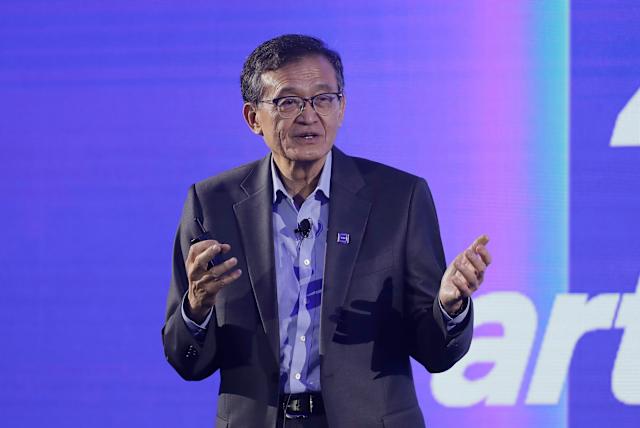 |
| Gold V.1.3.1 signal Telegram Channel (English) |

Intel CEO Lip-Bu Tan Faces National Security Scrutiny Amid U.S.-China Tensions and Strategic Semiconductor Challenges
2025-08-12 @ 15:08
Intel’s leadership is once again in the spotlight—this time over national security concerns tied to China, political pressure from Washington, and renewed scrutiny of the company’s strategic direction. The controversy centers on Intel’s new CEO, Lip-Bu Tan, a veteran of the semiconductor industry whose investments and past affiliations have triggered calls from U.S. political figures for his resignation. Markets reacted swiftly, with Intel’s stock dipping on the headlines, underscoring how sensitive the chip giant’s future has become at the crossroads of geopolitics and technology.
At the heart of the debate are questions about governance, conflicts of interest, and how America safeguards its semiconductor roadmap. Critics have pointed to Tan’s longstanding ties across the global chip ecosystem—including stakes and board roles spanning the U.S. and Asia—as potential conflicts in an era where export controls, supply chain resilience, and tech sovereignty dominate policy. The pressure intensified after disclosures and enforcement actions involving U.S. export rules in the EDA and semiconductor space reignited fears about sensitive technologies reaching Chinese military-linked institutions. Against this backdrop, public figures demanded Intel’s board ensure full divestment and airtight compliance—or consider a change at the top.
Intel’s response has been emphatic: the company says it remains deeply aligned with U.S. national and economic security priorities and is investing billions in domestic manufacturing and R&D. That stance reflects a larger truth about Intel’s role. Despite years of production stumbles and missed product timelines, Intel is still the only U.S. company positioned to develop and manufacture leading-edge logic processes onshore at scale. That capability is strategically critical at a time when the most advanced chips are predominantly fabricated in Taiwan and South Korea, and when Washington views leadership in semiconductors as foundational to economic and military strength.
This is also why the CHIPS and Science Act matters. The law unlocked tens of billions in incentives to shorten the distance between policy ambition and production reality. Intel secured a large share of these subsidies and loans, disbursed as it hits milestones for new fabs and advanced nodes in the U.S. The company’s Arizona projects, among others, are meant to restore domestic capacity at the frontiers of process technology. Success would reduce reliance on overseas foundries and bolster America’s negotiating position in a world where chips are leverage.
Still, leadership stability is not a side issue—it’s central. Intel’s board has already made bold moves in recent years: bringing back Pat Gelsinger to execute a turnaround centered on foundry services and internal process revamps, then pivoting again as performance and timelines disappointed investors. The appointment of Lip-Bu Tan signals a different calculus: pair deep ecosystem ties, design-tool fluency, and venture discipline with the capital intensity of leading-edge fabs. It’s a bet that better strategic alignment across design, manufacturing, and capital will reignite execution.
There are three big questions investors and policymakers should watch:
- National security safeguards: Can Intel demonstrate robust divestment, compliance, and governance that neutralize conflict-of-interest concerns while maintaining access to global talent, customers, and suppliers?
- Execution on advanced nodes: Will Intel hit its process and capacity milestones on U.S. soil, narrowing the gap with TSMC and Samsung and making its foundry offering credible for top-tier customers?
-
Capital and policy durability: Are CHIPS incentives, permitting reforms, and potential new policy tools—such as sovereign investment vehicles or public-private financing—sufficiently stable to support multi-year fab buildouts through market cycles?
The stakes are exceptionally high. If Intel can restore leadership in advanced manufacturing domestically, it would reshape the global chip map, enhance U.S. supply chain resilience, and anchor thousands of high-value jobs. If it stumbles, America risks deepening dependence on offshore nodes at precisely the moment when geopolitical risk is rising.
For investors, the trade-off is clear: near-term volatility versus long-term optionality. Political headlines and compliance overhangs can move the stock day to day. But the core thesis rests on whether Intel can convert policy support and capital spending into timely, competitive nodes—and secure marquee foundry customers to fill them. Clarity from the board on governance steps, transparent progress reporting on fab timelines, and early customer wins would be the catalysts that matter most.
In the end, Intel’s leadership saga is less about one executive and more about whether the U.S. can credibly rebuild end-to-end semiconductor capability at the cutting edge. The answer will be measured in wafers produced in America, design wins booked, and a supply chain that bends back toward resilience—far from the headlines, but decisive for the next decade of tech and geopolitics.




